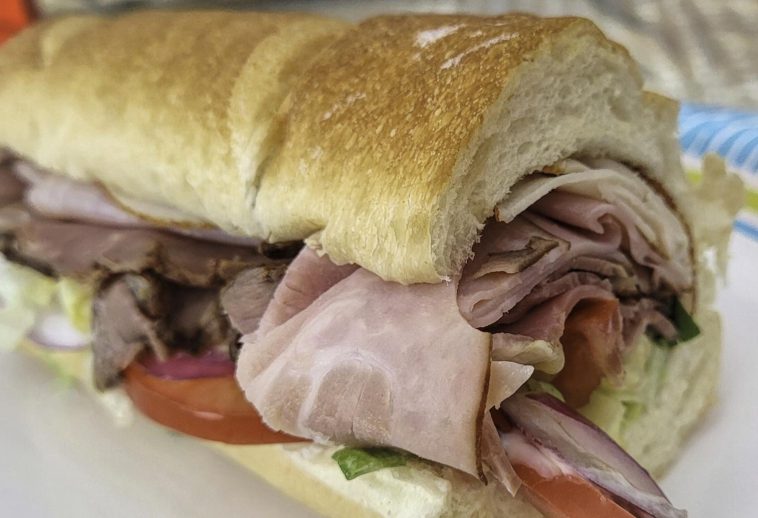In today’s fast-paced society, the lure of convenience often overshadows the importance of health, and nowhere is this more evident than in the prevalence of fast-food chains. These establishments are known for their quick service and appealing flavors, but they also spark a debate about whether their portion sizes have grown excessively large. This exploration delves into how consumer preferences, nutritional science, and corporate strategies intersect to address whether these large servings mirror customer desires or contribute to a broader issue of dietary imbalance. Join us as we journey through the oversized realm of fast food, where each bite presents both satisfaction and a challenge.
Analyzing Portion Trends in Fast Food
Over recent decades, there has been a significant increase in portion sizes within the fast-food industry. This shift prompts many consumers to wonder if these servings have become too large. The phenomenon of “supersized meals” is not merely a marketing tactic; it reflects evolving consumer expectations and strategic business practices. The notion that more food equates to better value has fostered an environment where larger portions are preferred despite often exceeding nutritional guidelines.
- Growing Portions: Items once considered large are now medium-sized as new options redefine normalcy.
- Consumer Demands: The call for substantial portions arises from hectic lifestyles where one meal must sustain energy throughout the day.
- Health Concerns: Larger servings lead to increased calorie consumption, heightening risks such as obesity and related health problems.
- Cultural Shifts: Bigger portions mirror broader changes in eating habits and lifestyle choices.
As this industry continues its evolution, it raises questions about balancing consumer satisfaction with health awareness. While value-sized meals hold undeniable appeal, their public health implications cannot be overlooked.
Understanding Health Impacts from Large Portions
When scrutinizing fast-food portions designed for both hunger satisfaction and indulgence appeal, it becomes clear that oversized servings can pose significant health risks. Excessive portion sizes contribute to overconsumption of calories alongside fats and sugars—factors linked with weight gain along with diseases like obesity, diabetes or heart issues.
- Excess Calories: Fast-food meals frequently surpass recommended daily caloric limits making balanced diets challenging.
- Nutritional Gaps: Emphasis on high-calorie low-nutrient foods leads towards essential vitamin deficiencies.
- Perception Changes: Regularly encountering large portions can skew perceptions about appropriate serving sizes promoting overeating elsewhere.
Recognizing these dangers encourages strategies such as mindful eating or choosing smaller options when possible—to lessen adverse effects from oversized offerings on overall well-being.
Balancing Enjoyment with Nutritional Needs
Fast-food outlets play an integral role in modern diets due largely due convenience factors yet often serve surprisingly ample amounts leading one question potential impacts upon nutrition & wellness levels alike! According experts—portion size increases at eateries significantly influence societal norms around overeating impacting both caloric intake balance within our dietary patterns altogether!
Several key points include:
– Many single-sitting meals exceed daily calorie recommendations substantially!
– Oversized dishes result unintentional weight gain-related complications potentially arising thereafter…
– Even healthier-seeming selections may hide excessive calories coupled alongside generous sizing…
Nutritionists advocate counteracting trends through mindful consumption awareness regarding portion control methods including selecting smaller shares sharing dishes utilizing kids’ menus etcetera—all helping maintain equilibrium between indulgence nutritional needs effectively!
Mindful Eating Strategies for Healthier Choices
Practicing mindfulness while dining fosters enjoyment appreciation concerning what we consume—a habit particularly beneficial amidst vast quantities typical across quick-service restaurants today:
1) Assess Sizes Beforehand – Review available information regarding menu item dimensions aiding informed decision-making aligning hunger levels properly…
2) Share/Save Meals – Consider splitting orders storing leftovers minimizing unnecessary calorie intake simultaneously curbing wastage aspects efficiently addressed likewise…
3) Choose Nutrient-Dense Options – Prioritize grilled items salads appropriately sized selections supporting personal diet goals meaningfully achieved!
4) Eat Slowly – Relish every mouthful granting sufficient time recognizing fullness preventing inadvertent overindulgence episodes altogether avoided ideally…
Integrating such approaches allows diners navigate fast food landscapes thoughtfully embracing conveniences without sacrificing long-term wellness objectives completely intact assuredly!
Conclusion
Navigating today’s dynamic landscape involving dietary habits versus increasing emphasis placed upon healthier living raises intriguing questions concerning whether current-day restaurant serving standards qualify excessive genuinely deemed so accordingly debated thoroughly ongoing basis indeed! As individuals decipher complex nutrition labels marketing ploys alike determining what defines “excess” transcends mere measurements reflecting societal norms personal values ultimately shaping comprehensive understanding consumption behaviors contextually driven insightfully approached successfully moving forward conclusively stated rightly here…




